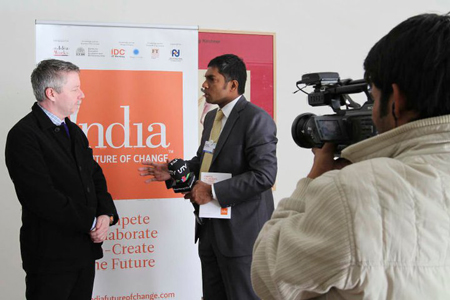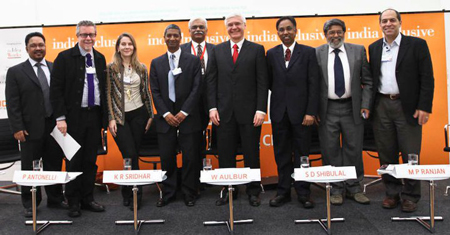Sport is a gigantic and powerful medium for the international spread of information, reputations and relationships that are the essence of public diplomacy. The money spent world-wide on sport dwarfs what any government...
KEEP READINGThe CPD Blog is intended to stimulate dialog among scholars and practitioners from around the world in the public diplomacy sphere. The opinions represented here are the authors' own and do not necessarily reflect CPD's views. For blogger guidelines, click here.
Indian PD at Davos: Credibility as Public Diplomacy

As India asserts itself within the global power dynamic, India is having a vibrant discussion about public diplomacy and how to engage in channels of public diplomacy as a means to project its emergence. Recently, as the world’s powerful gathered in Davos, INDIA Future of Change held two unique public diplomacy events that focused on corporate diplomacy and nation-branding on the sidelines of the World Economic Forum 2011.
The overall INDIA Future of Change initiative is an exercise in nation branding and public diplomacy, promoting India through its culture, diversity and democracy, as well as through its innovation and entrepreneurship (Full Disclosure: I am currently working with INDIA Future of Change as their PD Guru). The events were part of the initiative’s work to create awareness amongst audiences worldwide about the emergent reality of India to move past the existing stereotypes of India.
On Thursday, January 27th, INDIA Future of Change hosted an all-star ensemble of business leaders, policy makers and academicians to discuss how India can surpass China in economic growth. Also central to this discussion were how Indian government and business can partner to make this outcome a reality. Joining moderator Martin Wolf of the Financial Times on the panel were a high-level cast of Indian government officials and international business leaders.
While the panel centered on how India can surpass China in economic growth, part and parcel to this discussion was a focus on corporate diplomacy and how the private sector can work with the Indian government to project the business realities of a new India and where it fits into the global marketplace. Elements of corporate diplomacy were also tied in to the discussions. However, this theme was somewhat different than traditional notions of corporate diplomacy as diplomatic corporate social responsibility; rather, the corporate diplomacy taking place was more analogous to Indian corporations engaging in nation-branding of India to project a new Indian business and social reality.

Meanwhile, the following day, INDIA Future of Change convened a second panel featuring experts from the fields of innovation and design, as well as business entrepreneurs. The design, innovation and entrepreneurship panel sought to create a dialogue among the global creative classes about India, and how the field of design can lead both to innovation and entrepreneurship, and how each field can communicate a new Indian brand. While delving into the intersection of design, innovation and entrepreneurship as a catalyst for India’s inclusive growth, this panel focused on how India’s culture, its culture of innovative creation and cultural diplomacy could lend itself to such synergies.
In the realm of public diplomacy, these events served as a platform for discussion about India, and created a multilevel dialogue between Indian government officials, international business leaders and members of the global creative class. The panels were globally telecast on Bloomberg TV; furthermore, for both panels, INDIA Future of Change reached out across social networks, soliciting questions for the panelists via Twitter and Facebook.
During a different conference, the “Public Diplomacy in the Information Age” Conference held in December 2010, Shashi Tharoor made the point that what was time to turn an “Incredible India” into a “Credible India.” Events such as the INDIA Future of Change panels in Davos are just such an endeavor to shape the dialogue about India and introduce a maturing India onto the world’s stage.
The two panel INDIA Future of Change discussions were an exercise in credibility. Akin to the Voice of America credo, “the news may be good or bad but we will bring you the truth” as a means to create credibility, the panels held frank and honest discussion about India’s strengths as well as its shortcomings. Such openness is ultimately a form of public diplomacy, as Indian government and business officials spoke of the deficiencies as well as strengths of an emerging India, and by doing so, created more credibility for the Brand India story.
Image 1: An interview with Tim Brown, moderator of the Design, Innovation and Entrepreneurship panel
Image 2: The panelists and the organisers of the INDIA Future of Change session on Design, Innovation and Entrepreneurship in India at Davos assemble before the start of proceedings.
Visit CPD's Online Library
Explore CPD's vast online database featuring the latest books, articles, speeches and information on international organizations dedicated to public diplomacy.
POPULAR ARTICLES
-
November 3
-
November 5
-
November 13
-
November 25
-
December 17
Join the Conversation
Interested in contributing to the CPD Blog? We welcome your posts. Read our guidelines and find out how you can submit blogs and photo essays >.













